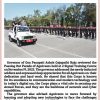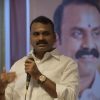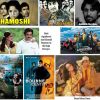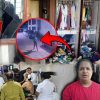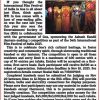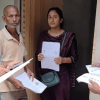Goa is abuzz with excitement as vintage bike and car owners, users, collectors and fans are decking […]
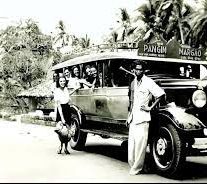
Goa’s Bandana of Resistance Dates Far Back
Opinion October 4, 2025By A Special Correspondent
Unlike most parts of the country, it’s not easy to shackle the people of India’s tiniest State into submission to anything that goes against them. Their pushbacks have always been fierce and decisive
Goa has a long history of activism going back to 1979, when the former Chief Minister late Shashikala Kakodkar – an intensely authoritarian figure – abruptly, and arbitrarily, withdrew the bus concession to students.
It was alleged she took the unpopular step at the instance of her husband Gurudas Kakodkar, who controlled licenses to operate buses by private parties.
The State-owned Kadamba Transport Corporation Ltd did not exist then. There was an outrage among students. Many prominent activists cut their teeth on the rigours of agitation.
Several of them belonged to the leftwing All India Progressive Students Union (AIPSU). Among the leaders of organisation were the late advocate Satish Sonak, journalist Sandesh Prabhudesai, politician Mohandas Loliekar and Aires Rodrigues, the fiery advocate from Ribandar.
Most of them are now in their sixties and seventies, but are still nostalgic over their baptism by fire. The agitation was a success as CM Kakodkar was forced to restore the bus fare concession.
It also marked the beginning of the end for Sashikala. The Kadamba Transport Corporation was formed to end the monopoly of the moving black holes of Goa.
The first citizen’s agitation I witnessed, in my early days in oHearaldo, was the Nylon 66 agitation. Dr Dattaram Desai, a doctor, created awareness of the highly polluting nature of the proposed Nylon 66 plant.
The project was a joint venture between Calcutta (now Kolkata)-based Thapar Group and US’s chemical firm DuPont to set up a Nylon 6,6 plant in Ponda. Nylon, by itself, is a highly inflammable material.
The stir produced Goa’s first environment martyr Nilesh Desai, who died in police firing ordered by the then Chief Minister Pratap Singh Rane.
As the agitation intensified, Du Pont was forced to abandon the project. The promoters roped in Roger Pariera – a high-profile PR consultant – for damage control.
In a meeting at, now defunct, Martin’s Beach Corner in Caranzalem, an attempt was made to bribe me with an American holiday for supporting the project. I indignantly declined it.
Then, there was the agitation by Konkani lovers, who intensified the stir after an activist was killed in a police firing in Margao.
The Konkani Mogis (Konkani lovers) barricaded the roads and paralysed the State. They also had to fight the deeply entrenched Marathi lobby, in the both governments.
Finally, on appeals from the senior Congress leaders, Rajiv Gandhi intervened and directed senior Rane to come out with bill to declare Konkani as the official language of the State.
Rane reluctantly complied even as he gave Marathi the same status. It ired the Catholics that Konkani was declared as official language only in Devanagari script, and not in Romi too.
The last of the successful citizen’s protest took place in 2006. This was against the Regional Plan (RP), 2011, notified by the then Town and Country Planning (TCP) Minister Atanasio Monseratte.
It was seen as a total sellout to the builders’ lobby. It started with a meeting of activists at the Don Bosco School at Panjim. Architect Dean D’cruz briefed us on the deadly impact of RP 2011. Dr Oscar Rebello was elected as the convener of the movement.
Dean and his team went from village to village, explaining the devastating outcomes of the RP 2011. It assumed the form of a grassroot level movement.
As realisation dawned on people, it became a mass agitation. The pushback was so fierce that the then new Chief Miniter Digamber Kamat was forced to scrap RP 2011, all together.
And, the formulation of a new RP 2021 was entrusted to a panel, consisting of eminent Goans like the retired chief planner of India Edgar Ribeiro, D’cruz and Rebello, among others.
The common thread between the four citizen’s movements, I have highlighted, is they started off as popular stirs. The bus-concession protest was taken up by the students pan-Goa.
The Nylon 66 was initiated by a doctor – Dattaram Desai – who alerted citizens on the environment fallout of Nylon 66 by drawing parallels with the Union Carbide gas tragedy in Bhopal
The language agitation channeled the deep-seated love for Konkani. It was a passionate desire to make it the official language of Goa.
The Goa Bachao Abhiyan reflected the outrage over the RP 2011, which threatened to turn Goa into a concrete jungle.
There was another crucial common thread. They were all fiercely secular. They saw the two major communities coming together for the greater good of Goans.
The latest conflagration is in keeping with the tradition of citizen-inspired and secular past Goan protests.
